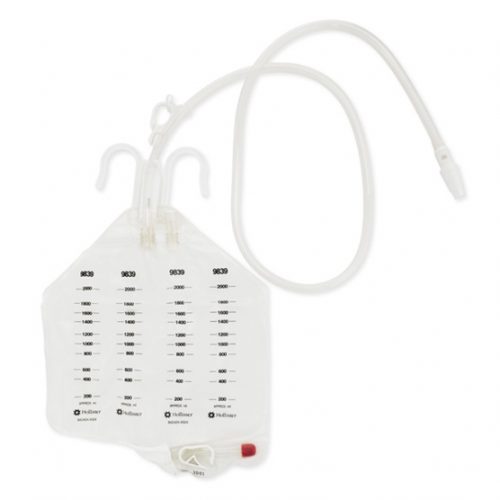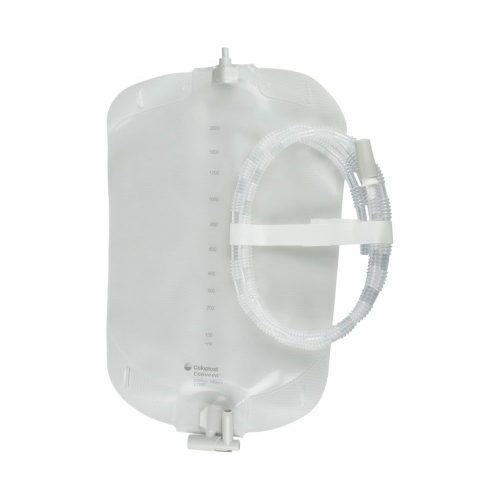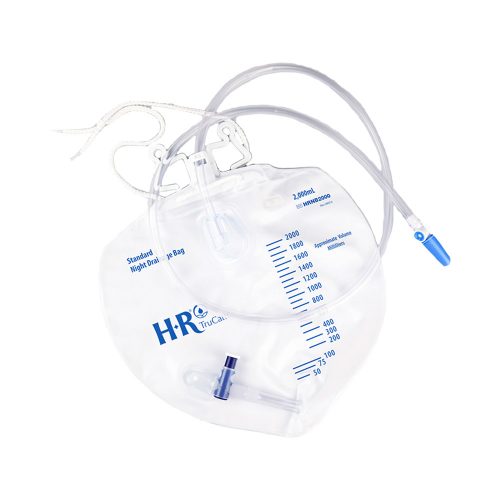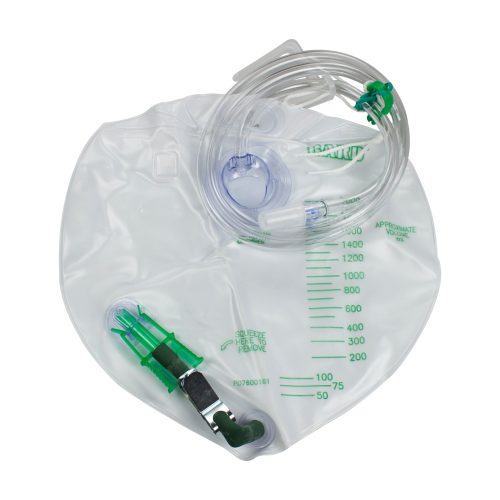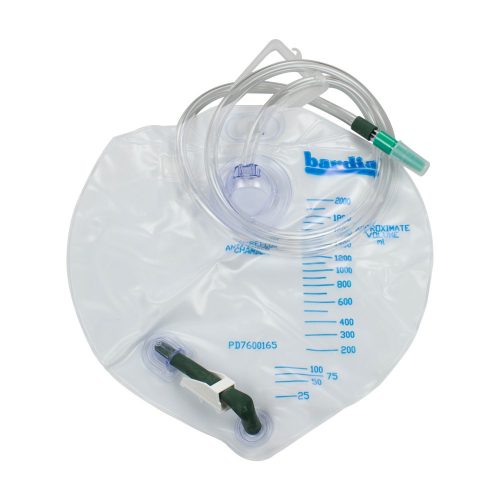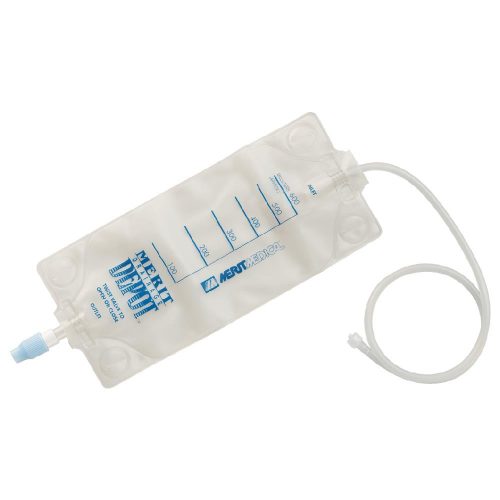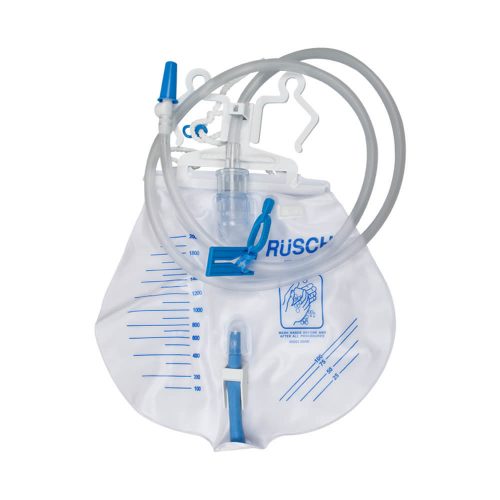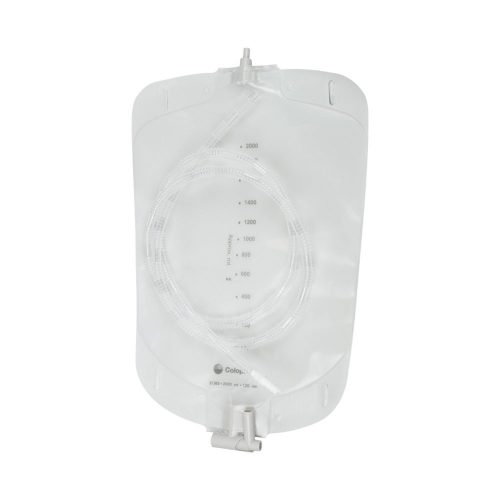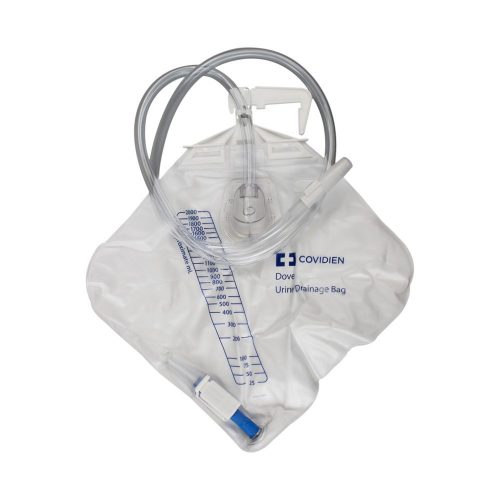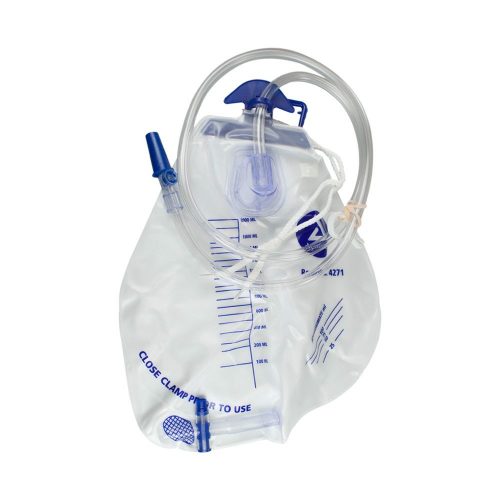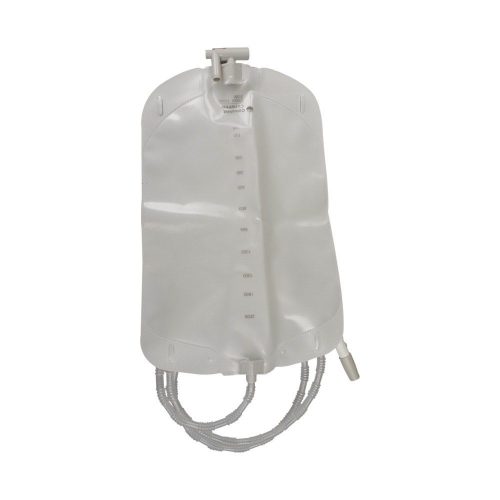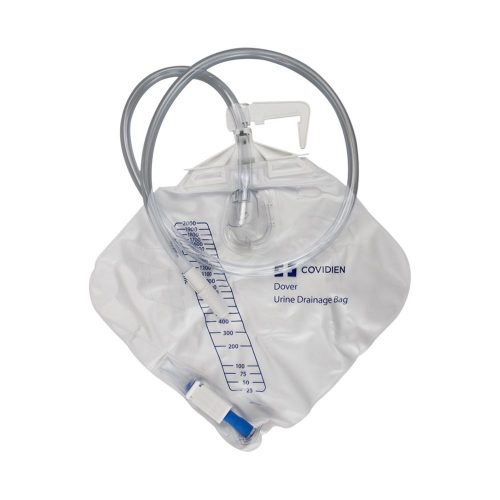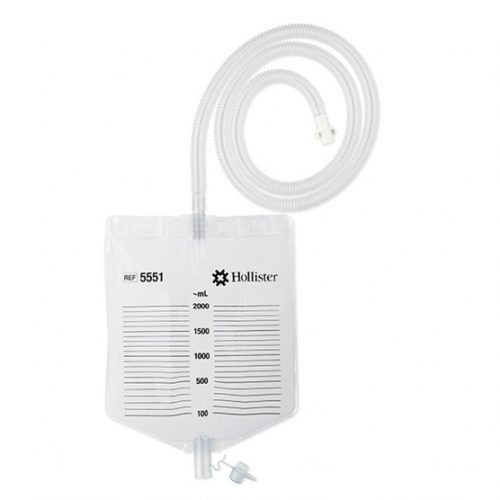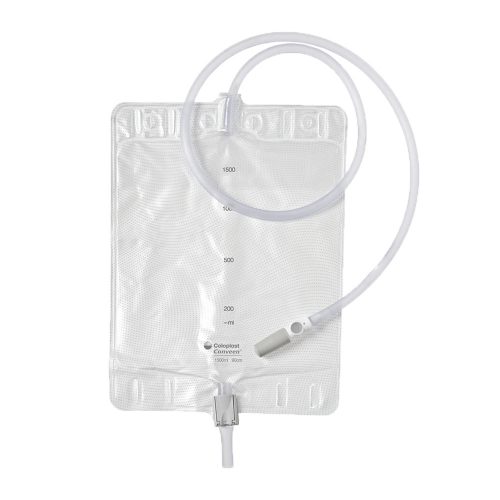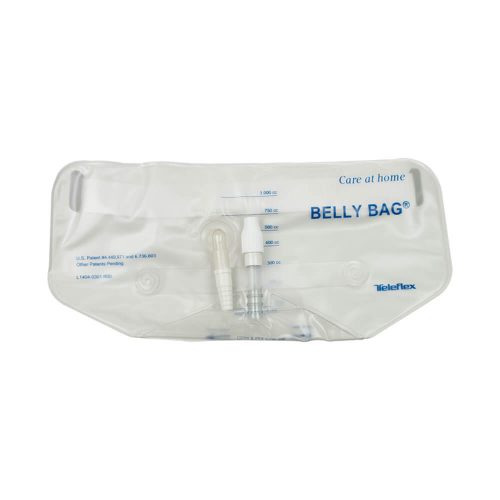Individuals living with a Foley or a male external catheter system typically transition from a smaller-sized leg bag intended for mobile daytime use to a bedside drainage bag. Also referred to as a “night bag,” this larger-volume system attaches to a wheelchair or side of a bed to remain accessible and collect urinary output.
About Bedside Drainage Bags
Patients end up using a Foley or male external catheter to manage incontinence or another urinary retention condition, recover from surgery, live with a spinal cord injury or if they are bedridden or non-ambulatory.
These patients typically use a smaller leg or catheter bag during the day to collect and drain urine, and change to a larger bedside drainage bag before going to sleep.
Considering the purpose and design, bedside drainage bags:
- Include extension tubing measuring about 60 inches, so that you don’t pull out the catheter accidentally at night.
- Hold a significantly larger volume than a leg bag, so that the patient won’t need to wake up and drain the bag during the night.
- Are frequently equipped with a drainage valve.
- Should not be placed above your bladder, and instead should be attached to the side of the bed, preferably in a separate, secure bin.
What About Belly Bags?
For overnight urinary drainage, some patients benefit from a belly bag. Designed for those who use a suprapubic catheter, this closed-system bag is secured around the waist with a belt, where urine gathers until it’s drained with a tap located toward the base.
What to Think About for an Overnight Urine Drainage Bag
You have several choices for features and functions when it comes to an overnight bladder bag:
- Frequency of use: These urine bags may be single use or can be used for up to seven days. Patients who regularly switch between leg and night bags are advised to select single-use solutions to avoid infection risks. Also realize that reusable bags will need to be cleaned for this purpose.
- Capacity: The larger the overnight catheter bag, the less frequently you’ll have to change and handle it. Also look for a metering feature if you need to measure output.
- Backflow prevention: Along with keeping the bag below your bladder, consider an anti-reflux chamber as a secondary preventative measure.
- Tubing: Single-use bedside drainage bags typically have narrower tubing, while reusable options are equipped with something wider. Realize that with narrower tubes, sediment can accumulate and block the flow of urine.
- Attachment: You have multiple choices for securing a bedside drainage bag, including strings, clamps, hooks and hangers. Make sure the selected solution optimally positions the bag.
- Sampling port: This feature is ideal if you need to sample urine directly from the bag.
- Emptying the bag: This method ranges from T-taps and twist outlets to tear-open and foldable designs, based on ease of use, reusability and infection protection.
